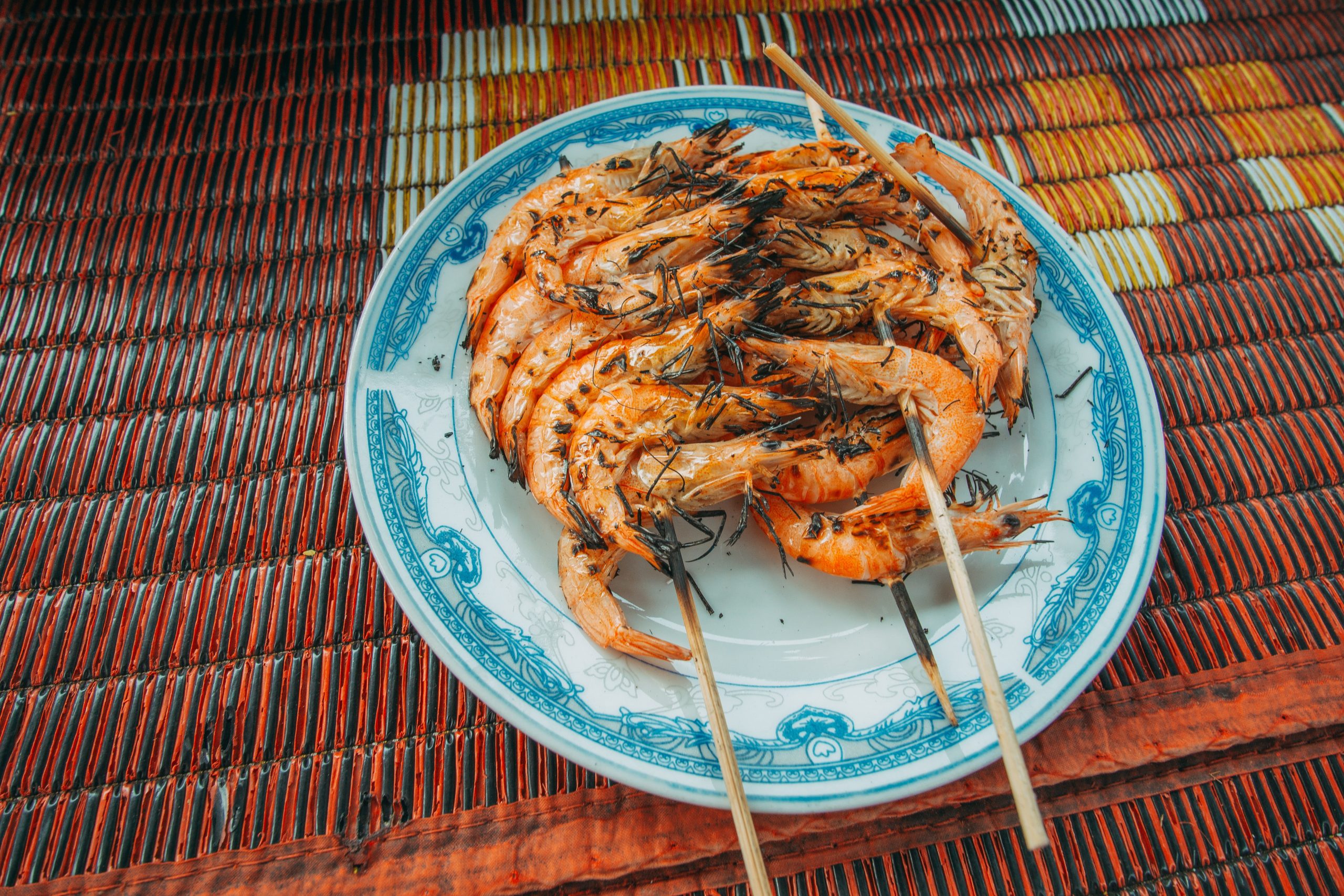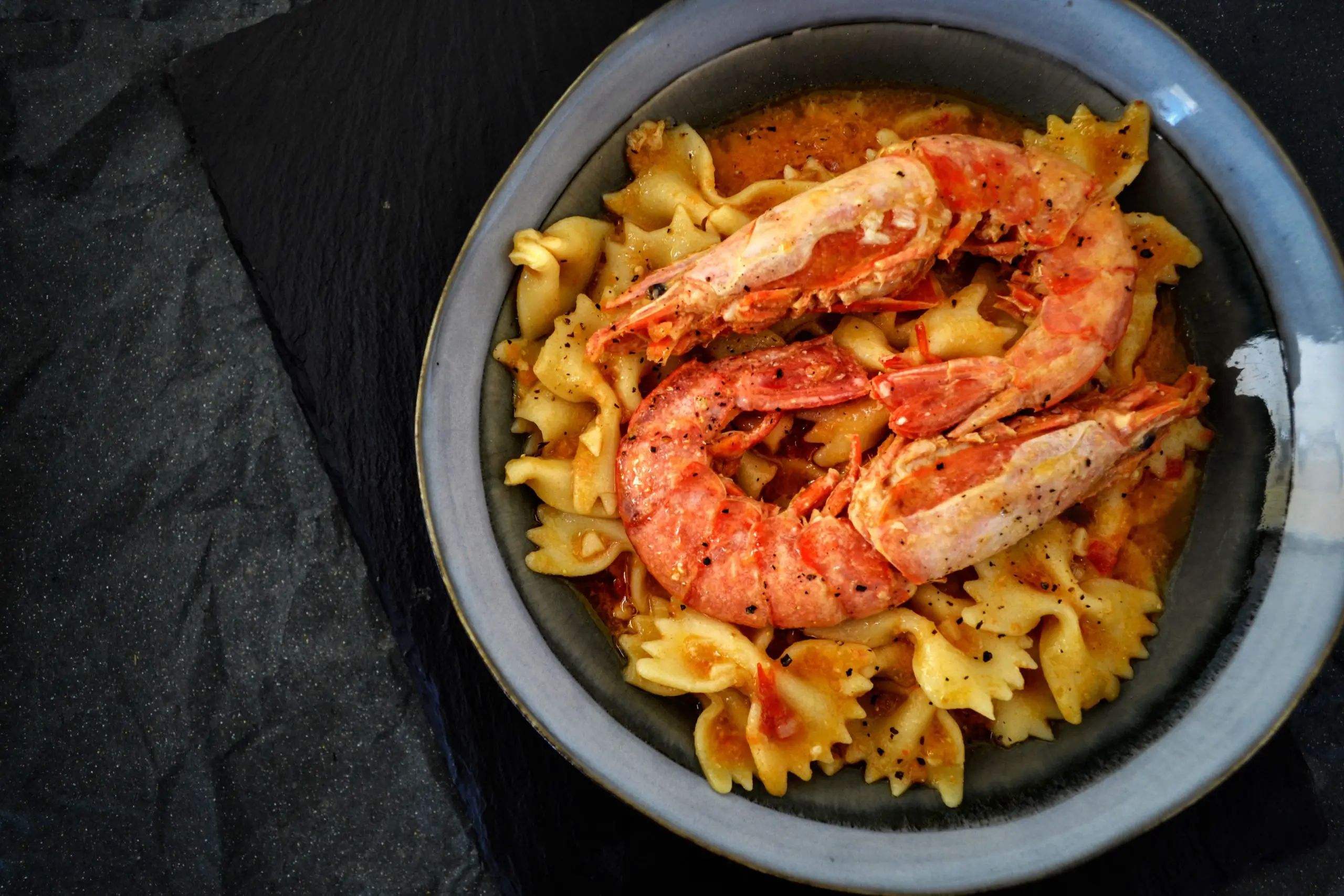Whether you bought prawns in the shell or cooked, you may wonder if you can freeze them and how long they will last in the fridge. The answer to this question may vary. Baked ones can last up to four days, while thawed ones can last up to five days. So let’s start! In this article, you will find all the crucial information about cooked prawns and their shelf life, learn how to freeze, refreeze prawns, and defrost prawns, and identify spoiled prawns.

Can you Freeze Cooked Prawns?
Prawns are extremely perishable in their raw state. Thus, they are frequently frozen or boiled at sea as soon as they are collected. If you intend to freeze your cooked or raw prawns, you must first ask the fishmonger if the item has been frozen. If they have already been frozen, avoid freezing the batch again and utilize the prawns right away.
For up to three months at minus 18 degrees Celsius or lower, cooked or raw prawns that have never been frozen can be stored in the freezer. Some household fridges and freezers might operate at lower than the abovementioned temperatures. If unsure, check the temperature of your refrigerator or freezer or consider storing items for a shorter period.
According to Morgan Seafood, since the shell serves as an insulator when frozen, it is recommended to leave the head on. Fill the container to three-quarters full with the prawns, leaving space at the top for water to be added later. Place the container in the freezer. Put a lid on it, tape it shut, and then cover it with water. Ensure that the container is marked with a date and label.
How do you Freeze Cooked Prawns?
Fresh or cooked prawns can be frozen when it comes to prawns. Always handle prawns carefully to prevent cross-contamination, whether you are freezing cooked or fresh prawns.
Cooked Prawns Freezing: You may save time and energy by cooking prawns ahead of time and freezing them for later use. If you think ahead, freezing cooked prawns is a fantastic strategy to reduce food waste. The following are the procedures for freezing cooked prawns:
- Step 1: After the prawns are cooked, let them cool to room temperature. However, be careful not to leave them out for more than two hours, as they can begin to become contaminated with hazardous bacteria.
- Step 2:The prawns should be put into a freezer bag or airtight container after cooling down.
- Step 3: Before sealing, push the freezer bag against the bag to expel any extra air. A tightly fastened lid will result in an airtight container.
- Step 4: Label the bag or container with the date it should be frozen and put it in the freezer.
Top Three Advice on Freezing Cooked Prawns:
Now that you know how to freeze them, here are our top 3 recommendations for getting the greatest results from freezing prawns:
- Verify the freezer’s temperature: Prawns freeze most effectively at minus 18 degrees Celsius or lower. Before putting your prawns in the freezer, check the temperature and make any necessary adjustments because most domestic freezers are set at a slightly higher temperature than this. Consider freezing prawns for a little less time if your temperature is the same.
- Keep them safe: Although we have indicated that you can peel prawns before freezing them, it’s best to keep the head and tail on. This is because they serve as insulators and freshen your prawns during freezing. After de-shelling your prawns, freezing them won’t make much of a difference.
- Defrost the refrigerator: As hazardous bacteria can rapidly form on seafood that hasn’t been treated properly, you must be extremely careful when defrosting shellfish. Never allow prawns to defrost at room temperature on the countertop. Follow the instructions in one of the sections below when defrosting your prawns.
How should I Put Cooked Prawns in the Refrigerator?
Fresh prawns can be stored in the refrigerator for two to three days at a temperature of 0 to 4 degrees Celsius. Prawns should be kept for as long as possible in their shells and an airtight container or securely covered with plastic wrap, away from other foods, on the bottom shelf of the refrigerator, which is normally the coldest place in the refrigerator.
You might also carry a small esky or cool bag with you to the store when you buy your prawns to ensure that there is no chance of germs building up. This way, you can ensure that your product is preserved in the coolest conditions possible from the store to your plate. Please don’t leave the prawns in the car or on the bench; immediately place them in the refrigerator or freezer after arriving home.
What is the Shelf Life of Cooked Prawns?
Freezing is the best way to go if you have a lot of cooked shrimp. Shrimp can be kept in a refrigerator for a few days before they spoil. While prawns, whether cooked or raw, can be stored in the refrigerator for up to three days, it is preferred that they be stored in the freezer, where they can be kept for three months. On the other hand, frozen shrimp will stay delicious for up to six months. Once packaged and frozen, you can keep shrimp for months.
The application of high pressures (200 and 400 MPa) in chilled prawn tails, both vacua packaged and routinely stored (with air), has been studied in this work. The prawn samples’ shelf life was extended by vacuum packaging and high-pressure treatment, albeit the muscle color was slightly changed and appeared whiter.
Can you Refreeze Prawns?
Prawns have a fragile texture; thus, refreezing them is not advised. The textures will get mushy after repeated freezing. Try only to take what you need out of the freezer to avoid having to refreeze the prawns. It’s best to keep frozen prawns in the refrigerator rather than thawing an excessive amount of them. Before the prawns need to be thrown out, you have two days to use them.
How are Prawns Defrosted?
Knowing when to defrost and thaw the prawns is essential while cooking. Prawns can be challenging to thaw since they can become malformed and even have a terrible flavor. They are also weak and quickly break if not handled correctly. The best methods for defrosting prawns are listed below.
- They can be microwaved to thaw. This is because it warms the meat’s shell before moving inside, making it simpler to cook the following thawing.
- Prawns can be defrosted in a saucepan by covering them with water and salt while they thaw out. Applying some heat will assist in adding taste and tenderness while also melting any ice crystals that may have formed before cooking.
- It’s recommended to thaw frozen prawns in the refrigerator overnight since the ideal technique is to cover them and allow them to defrost gradually over 36 to 48 hours. Prawns should not be refrozen after being defrosted.
Can Cooked Frozen Prawns be Reheated More than Once?
Your cooked frozen prawns should be kept in smaller quantities because that is the best option. You should only reheat cooked frozen prawns once, just like you shouldn’t do with cooked chicken. When you reheat them more than once, serious food safety risks arise.
Portioning your cooked prawns will enable you to reheat smaller portions quickly if you believe you can only eat some at once. So you will feel free to reheat the entire batch when you bring them out to reheat. However, tossing them is best if you have to reheat prawns more than once. If not, you could end up being uncomfortably ill.
Can you Freeze Prawns that Still have their Heads On?
The head should be removed, but it is preferable to leave the shell on so the prawns preserve their freshness for a longer period in the freezer. They were following any of the abovementioned procedures and freezing them for up to three months after removing the head.
Are Cooked Prawns Safe to Eat Cold?
If you are certain that the cooked prawns were prepared properly and kept, you can eat them cold. It is best practice to reheat them to ensure they are clear of harmful bacteria and less prone to cause food poisoning.
How do We Know that the Prawns are Bad?
In their new, undamaged state, prawns generally smell like seafood and are slightly salty. They are probably still alright but getting close to their peak if they smell overpoweringly fishy.
Always on the side of caution when it comes to prawn safety. This indicates bacterial development in the prawns. It is time to throw out the prawns if the smell seems wrong and you detect any intense smells, especially those similar to ammonia or bleach. It’s best to discard them if you’re unsure but believe they might be bad.
Conclusion
The sort of prawns includes prawns. They are crustaceans with long, slender bodies and small legs that can be found in brackish or freshwater. Although they can be boiled or steam-cooked, prawns are a delicacy often consumed as shellfish. Prawns prepared in butter, lemon juice, garlic, and parsley are a favorite side dish for many people with rice or spaghetti. You might ask if you can freeze prawns if you’ve cooked them or purchased fresh ones.

